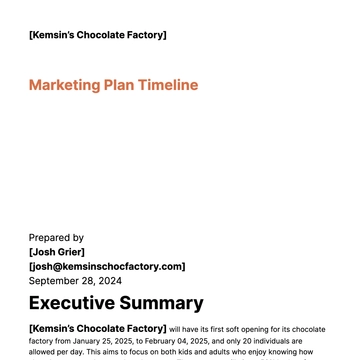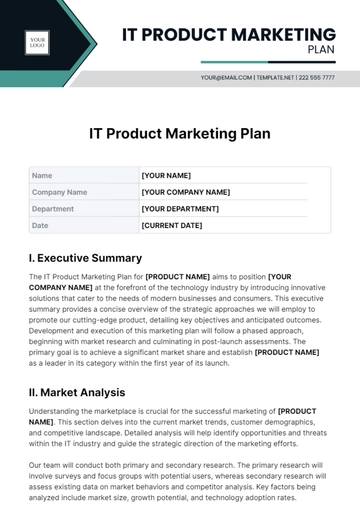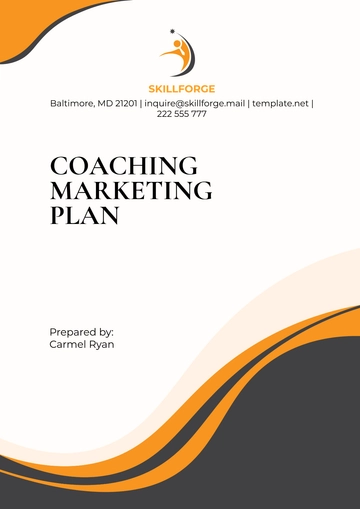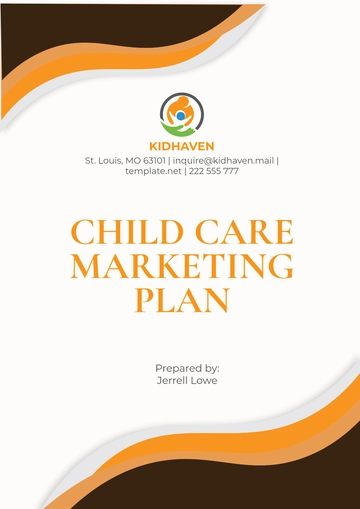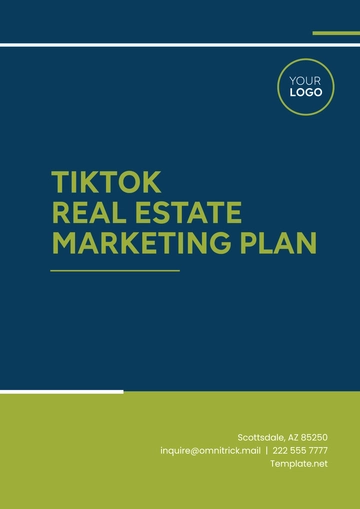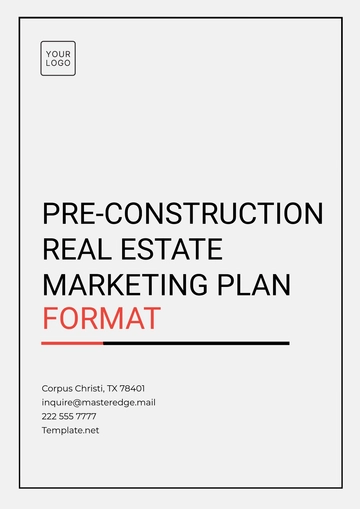Free Startup Marketing Plan
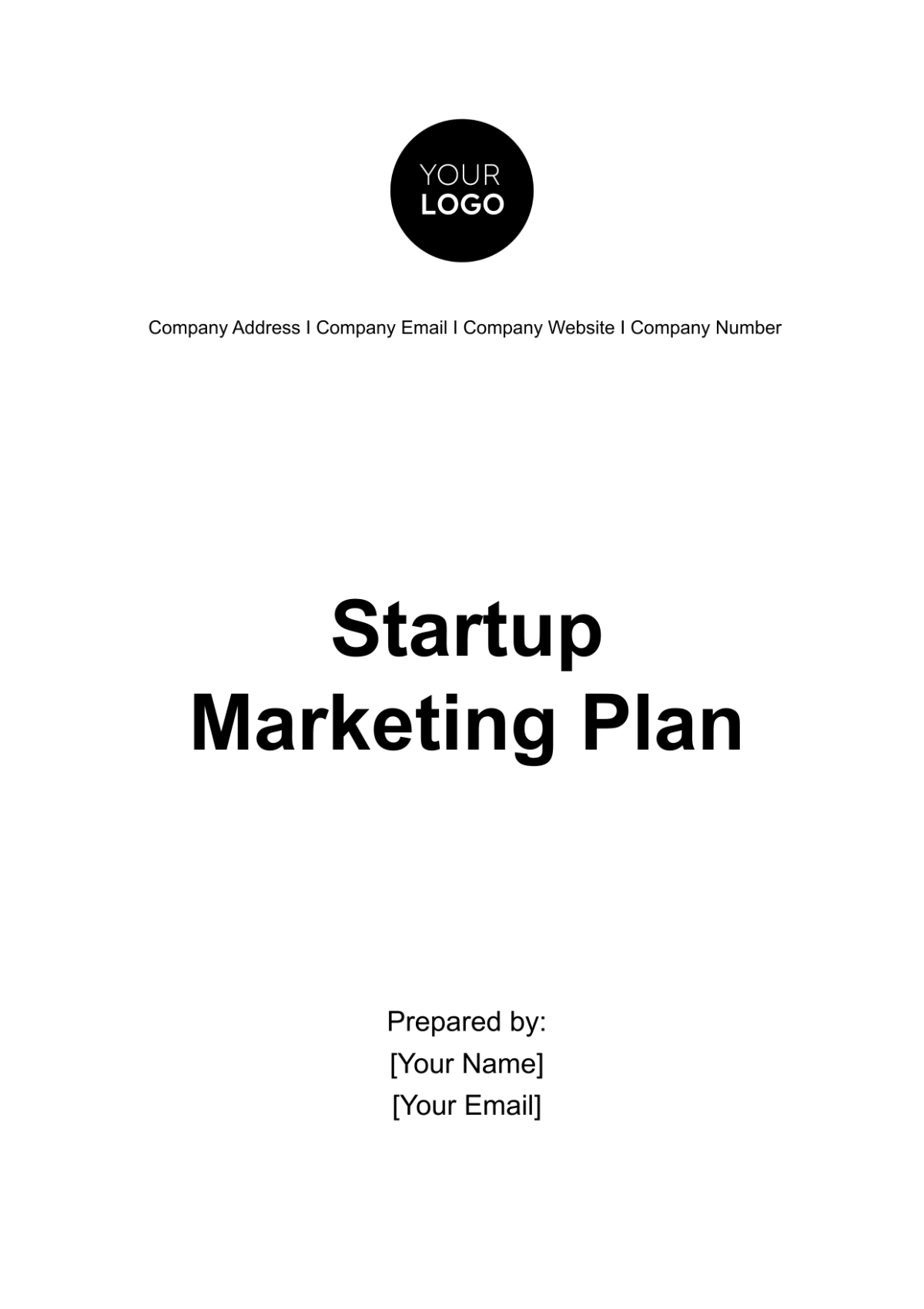
Executive Summary
[Your Company Name] is a technology startup specializing in innovative home automation solutions. Our flagship product, the "[Product Name]" integrates cutting-edge AI algorithms with IoT devices to create a seamless and intelligent home environment. With features such as voice control, adaptive learning, and remote accessibility, the [Product Name] offers unparalleled convenience and control for homeowners.
Our mission is to simplify the lives of homeowners by providing intuitive and efficient automation solutions that adapt to their unique lifestyles. By combining advanced technology with user-centric design, we strive to redefine the way people interact with their homes.
In this comprehensive marketing plan, we outline our strategic objectives and initiatives to penetrate the competitive smart home market. By leveraging targeted marketing campaigns and strategic partnerships with homebuilders and technology retailers, we aim to establish [Your Company Name] as a leader in the smart home automation industry within the next two years.
Introduction
Founded in [2050], [Your Company Name] was born out of a passion for leveraging technology to enhance everyday living experiences. With a team of dedicated engineers, designers, and home automation enthusiasts, we have developed the [Product Name] to address the growing demand for intelligent home solutions.
Our mission is to empower homeowners with innovative automation technologies that not only streamline daily tasks but also enhance security, energy efficiency, and overall comfort. At [Your Company Name], we believe in creating a connected ecosystem where devices seamlessly interact to anticipate and fulfill the needs of users, ultimately transforming houses into smart homes.
Market Analysis
The home automation industry is experiencing unprecedented growth, driven by increasing consumer interest in smart home technologies. According to market research by [Market Research Firm], the global smart home market is projected to reach $0 billion by 2060, with a compound annual growth rate (CAGR) of [0%]. This growth is fueled by several factors, including the growing adoption of IoT devices, advancements in artificial intelligence, and the increasing integration of voice-activated assistants like Amazon Alexa and Google Assistant into everyday devices.
Key trends shaping the market include the proliferation of IoT devices, which enable homeowners to remotely control and monitor various aspects of their homes, from lighting and thermostats to security cameras and door locks. Additionally, advancements in artificial intelligence are driving the development of smart home systems that can learn and adapt to homeowners' preferences over time, enhancing convenience and efficiency.
[Your Company Name] will primarily target the urban homeowner demographic, comprising tech-savvy individuals and families with disposable income. This segment values convenience and seeks innovative solutions to simplify their busy lifestyles. By offering a comprehensive home automation solution that seamlessly integrates with existing devices and platforms, [Your Company Name] aims to capture a significant share of this lucrative market segment.
Competitor analysis reveals several established players in the smart home market, including industry giants such as [Competitor A], [Competitor B], and [Competitor C]. While these companies have strong brand recognition and extensive product portfolios, there remains an opportunity for [Your Company Name] to differentiate itself through innovation and a focus on user experience.
By leveraging our expertise in AI and IoT technologies, [Your Company Name] will position the [Product Name] as a cutting-edge solution that offers unmatched convenience, security, and energy efficiency to homeowners.
Marketing Objectives
[Your Company Name] has identified the following SMART objectives to guide our marketing efforts:
Increase brand awareness: Raise awareness of the SmartNest Hub among our target audience by achieving [0%] brand recognition within the first year. This will be accomplished through a multi-channel marketing approach, including digital advertising, social media campaigns, and participation in industry events and trade shows.
Drive customer acquisition: Acquire [0] of new customers within the first six months of product launch through targeted marketing campaigns and promotions. This will involve implementing a robust lead generation strategy, optimizing our website for conversions, and offering incentives such as discounts and referral programs to incentivize purchases.
Establish thought leadership: Position [Your Company Name] as a trusted authority in the smart home industry by publishing [0] of insightful blog posts and whitepapers on home automation trends and best practices within the first year. By sharing our expertise and knowledge with homeowners and industry professionals, we aim to build credibility and trust, ultimately driving engagement and loyalty among our target audience.
These objectives are designed to ensure that [Your Company Name] effectively penetrates the market, builds a loyal customer base, and establishes a strong brand presence within the smart home industry. Through strategic planning and execution, we are confident in our ability to achieve these goals and establish [Your Company Name] as a leader in the rapidly evolving world of home automation.
Target Audience
Our target audience consists of tech-savvy homeowners aged between 25 and 45 years old, residing primarily in urban and suburban areas. They are early adopters of technology and are enthusiastic about integrating smart solutions into their homes to streamline daily routines and enhance quality of life. This demographic segment values convenience, efficiency, and customization in their smart home devices.
A. Demographic Information:
Age: | 25-45 years old |
Location: | Urban and suburban areas |
Income: | Middle to upper-middle income bracket |
Education: | College-educated professionals |
Occupation: | Tech industry professionals, entrepreneurs, young families |
B. Psychographic Information:
Lifestyle: | Busy professionals seeking convenience and time-saving solutions |
Values: | Sustainability, efficiency, convenience, and security |
Hobbies/Interests: | Technology, home improvement, eco-friendly living |
Pain Points: | Lack of time, security concerns, desire for energy efficiency and cost savings |
C. Buyer Personas:
Tech Enthusiast Tara: A 32-year-old software engineer living in a suburban home with her spouse and two children. Tara values technology and seeks smart home solutions that simplify daily tasks and enhance family safety.
Busy Entrepreneur Ben: A 40-year-old entrepreneur running his own tech startup from a downtown loft. Ben prioritizes efficiency and convenience and is interested in smart home devices that can optimize his work-life balance.
Family-oriented Emily: A 35-year-old stay-at-home mom residing in a suburban neighborhood with her husband and three young children. Emily values security and seeks smart home solutions that offer peace of mind and simplify household management.
Unique Selling Proposition (USP)
The SmartNest Hub offers a unique combination of advanced technology, intuitive design, and seamless integration, setting it apart from competitors in the smart home market. Key features and benefits include:
Advanced AI Integration: The [Product Name] leverages artificial intelligence to learn users' preferences and routines, automatically adjusting settings to optimize comfort, energy efficiency, and security.
Seamless Integration: Compatible with a wide range of IoT devices and platforms, the [Product Name] serves as the central command center for the connected home, enabling users to control and monitor all aspects of their home environment from a single interface.
Intuitive User Experience: With a user-friendly interface and voice-activated commands, the [Product Name] makes home automation accessible to users of all ages and technical abilities, enhancing convenience and usability.
Enhanced Security: Equipped with advanced security features such as facial recognition, motion detection, and real-time alerts, the [Product Name] provides homeowners with peace of mind and proactive protection against intruders and emergencies.
Energy Efficiency: By optimizing energy usage based on occupancy patterns and environmental conditions, the [Product Name] helps homeowners reduce their carbon footprint and save on utility bills, contributing to a more sustainable future.
Marketing Strategies
A. Product Strategy
The product strategy for [Your Company Name] focuses on positioning the [Product Name] as the ultimate smart home solution that offers unparalleled convenience, security, and energy efficiency. Key components of the product strategy include:
Product Features: Highlighting the advanced AI capabilities, seamless integration with IoT devices, and intuitive user interface of the [Product Name].
Value Proposition: Emphasizing the benefits of using the [Product Name], such as time savings, enhanced security, and cost savings on energy bills.
Product Differentiation: Showcasing the unique features and advantages of the [Product Name] compared to competing smart home systems.
B. Pricing Strategy
The pricing strategy for the [Product Name] is designed to be competitive yet reflective of the product's value proposition and premium features. The pricing tiers are as follows:
Product Package | Price | Features |
|---|---|---|
Basic Package | $0,000 | Includes [Product Name] and basic functionalities |
Premium Package | $0,000 | Includes [Product Name], additional sensors, and |
C. Distribution Strategy
The distribution strategy for [Your Company Name] focuses on leveraging both online and offline channels to reach our target audience effectively. Key elements of the distribution strategy include:
Online Distribution: Selling the [Product Name] through our e-commerce website, as well as through online marketplaces such as Amazon and Best Buy.
Offline Distribution: Partnering with home improvement stores, electronics retailers, and smart home installation services to showcase and sell the [Product Name] in-store.
D. Promotional Strategy
The promotional strategy for [Your Company Name] includes a mix of digital marketing, traditional advertising, and strategic partnerships to generate awareness and drive sales. Key components of the promotional strategy include:
Digital Marketing: Running targeted ads on social media platforms like Facebook, Instagram, and Twitter to reach our target audience and drive website traffic.
Content Marketing: Creating engaging blog posts, videos, and infographics that highlight the benefits of the [Product Name] and provide helpful tips and tutorials for homeowners.
Strategic Partnerships: Collaborating with homebuilders, real estate agents, and interior designers to promote the [Product Name] as a must-have feature for modern homes.
Marketing Tactics
Social Media Advertising: Launching targeted advertising campaigns on Facebook and Instagram to reach potential customers based on demographics, interests, and online behavior.
Content Marketing: Creating a series of blog posts and videos that educate consumers about the benefits of home automation and showcase the features of the [Product Name].
Email Marketing: Building an email list of leads and customers and sending out regular newsletters with product updates, promotions, and tips for maximizing the benefits of the [Product Name].
Influencer Partnerships: Collaborating with influencers in the home decor and technology niches to promote the [Product Name] to their followers and generate buzz around the product.
Event Sponsorships: Participating in industry events, trade shows, and home expos to showcase the [Product Name] and engage with potential customers face-to-face.
Budget Allocation
[Your Company Name] has allocated a budget of [$000,000] for the marketing initiatives outlined in this plan. The budget will be distributed across various channels and activities to maximize reach and effectiveness. The budget allocation is as follows:
Marketing Activity | Budget Allocation |
|---|---|
Digital Advertising | [$00,000] |
Content Marketing | [$00,000] |
Social Media Management | [$00,000] |
Event Sponsorships | [$00,000] |
Email Marketing | [$00,000] |
Influencer Partnerships | [$00,000] |
Miscellaneous Expenses | [$00,000] |
Total | [$000,000] |
The budget allocation will be regularly monitored and adjusted as needed to optimize performance and ensure that marketing objectives are met within the specified timeframe.
Marketing Metrics
[Your Company Name] will track key performance indicators (KPIs) and marketing metrics to measure the effectiveness of our marketing efforts and evaluate the success of the SmartNest Hub launch. The following metrics will be monitored:
Website Traffic: The number of visitors to our website, including unique visitors, page views, and time spent on site.
Conversion Rate: The percentage of website visitors who take a desired action, such as signing up for a newsletter or making a purchase.
Customer Acquisition Cost (CAC): The cost associated with acquiring a new customer, calculated by dividing total marketing expenses by the number of new customers acquired.
Return on Investment (ROI): The ratio of net profit to marketing investment, expressed as a percentage. ROI will be calculated by subtracting marketing expenses from revenue generated and dividing by marketing expenses.
Social Media Engagement: Metrics such as likes, comments, shares, and follower growth on social media platforms, indicating audience engagement and brand awareness.
Email Open and Click-through Rates: The percentage of email recipients who open an email and click on a link, indicating the effectiveness of email marketing campaigns.
Event Attendance and Leads Generated: The number of attendees at events and trade shows where [Your Company Name] is present, as well as the number of leads generated through these events.
Influencer Impact: The reach and engagement generated by influencer partnerships, including impressions, clicks, and conversions attributed to influencer content.
By regularly monitoring these metrics and adjusting our strategies accordingly, [Your Company Name] will be able to optimize marketing performance and achieve our objectives of increasing brand awareness, driving customer acquisition, and establishing thought leadership in the smart home industry.
Timeline
The timeline for the implementation of our marketing plan is outlined below:
Quarter 1: Market Research and Strategy Development
Conduct market research to identify target audience preferences, competitor strategies, and industry trends.
Develop a comprehensive marketing strategy, including objectives, target audience segmentation, and messaging.
Finalize product positioning and pricing strategy based on market insights.
Quarter 2: Launch and Initial Promotion
Launch the [Product Name] with a coordinated marketing campaign across multiple channels, including digital advertising, social media, and email marketing.
Host a virtual launch event to generate excitement and engage with potential customers.
Implement promotional offers and discounts to incentivize early adopters and drive initial sales.
Quarter 3: Scaling and Optimization
Evaluate the performance of marketing initiatives and adjust strategies as needed based on key performance indicators (KPIs).
Scale successful marketing campaigns and channels to reach a wider audience and drive continued growth.
Explore opportunities for strategic partnerships and collaborations to expand brand reach and visibility.
Quarter 4: Growth and Expansion
Launch new product features or variations based on customer feedback and market demand.
Expand into new markets or geographic regions through targeted marketing campaigns and localization efforts.
Evaluate the overall success of the marketing plan and identify areas for further improvement in the next planning cycle.
Risks and Contingencies
While [Your Company Name] is confident in the success of our marketing plan, it is essential to acknowledge potential risks and have contingency plans in place to mitigate their impact. Some key risks and corresponding contingencies include:
Market Saturation: In the event of increased competition and market saturation, [Your Company Name] will focus on differentiating the SmartNest Hub through innovation, superior customer service, and strategic partnerships.
Technological Challenges: If faced with technological issues or delays in product development, [Your Company Name] will communicate transparently with customers, provide regular updates on progress, and offer alternative solutions or compensation where possible.
Economic Downturn: In the event of an economic downturn impacting consumer spending, [Your Company Name] will adjust pricing strategies, offer promotions or discounts to incentivize purchases, and explore cost-saving measures while maintaining the quality of our products and services.
Supply Chain Disruptions: Should supply chain disruptions occur, [Your Company Name] will diversify suppliers, maintain buffer stock where feasible, and prioritize communication with customers regarding any potential delays or impacts on product availability.
Conclusion
The marketing plan outlined above provides a comprehensive roadmap for [Your Company Name] to achieve its objectives of increasing brand awareness, driving customer acquisition, and establishing thought leadership in the smart home industry. By executing strategic marketing initiatives and monitoring key performance indicators, we are confident in our ability to successfully launch and promote the [Product Name], ultimately driving growth and expanding our market presence.
As we move forward, [Your Company Name] remains committed to delivering innovative home automation solutions that enhance the lives of homeowners and contribute to the advancement of the smart home industry. We look forward to the exciting journey ahead and the opportunity to make a meaningful impact on the way people interact with their homes.
- 100% Customizable, free editor
- Access 1 Million+ Templates, photo’s & graphics
- Download or share as a template
- Click and replace photos, graphics, text, backgrounds
- Resize, crop, AI write & more
- Access advanced editor
Introducing the Startup Marketing Plan Template available on Template.net. Crafted to assist startups in navigating the complexities of marketing strategy, this template is fully editable and customizable to suit unique business needs. With our user-friendly Ai Editor Tool, modifying and refining the plan is seamless, empowering startups to create impactful marketing strategies with ease and precision.

